The hills were on fire. It was August and the view from our car window of smoke rising from forest fires was as dramatic as the road taking us south. The “motorway of the sun”, more prosaically known as the A2, negotiates the mountains of Calabria through a series of tunnels and high bridges right down to the toe of Italy.
Long before it reaches the tip, the autostrada veers south-west towards the coast, as if it’s had enough of the rugged interior. This was where we left it, in search of EcoBelmonte, one of just two alberghi diffusi in Calabria, in the historic centre of a village called Belmonte Calabro, where tufo stone houses are being converted into tourist accommodation. Calabria is a land of secrets, a stronghold of the Ndrangheta mafia, with sleepy, isolated villages hidden in its wildernesses – the region boasts three national parks.
It’s also something of a mystery to foreign tourists, its charms less accessible and obvious than almost any other Italian region. EcoBelmonte, overlooking the Tyrrhenian coast, is no exception. For 500 years the residents of Belmonte Calabro fished and farmed, their lives changing little until the 1940s, when droves of villagers joined a countrywide wave of emigration. A lack of jobs in the rural south has seen the exodus continue, the younger generation always leaving. Belmonte Calabro’s medieval core is all but abandoned; its population, once 3,000, has dwindled to just 30, its houses have fallen into disrepair.
One of the few young people to stay is Gianfranco Suriano, who has such happy memories of growing up in a village that felt like “one big family” that he wants to bring it back to life. With the help of a few friends, he set up a not-for-profit association and began the painstaking process of asking owners who had long abandoned their dwellings if he could convert them into holiday homes. It took four years to restore 14 houses – reusing found materials such as roof tiles to create a hearth, and non-toxic paints and cement.
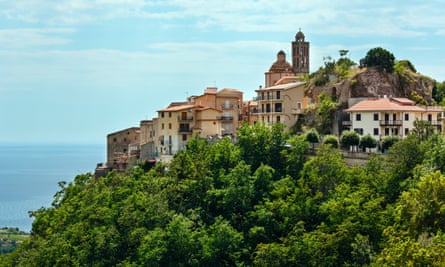
The result is one of the most magical places I’ve ever stayed. In this car-free enclave, houses are stacked tightly and linked by alleys barely a metre wide. Stone archways suddenly reveal tiny courtyards filled with flowers; painted steps lead around shadowy corners. Old Calabrian sayings are painted on walls and doors …“Clear sky is not afraid of some small thunder.” Our house, A Parta, was small and simple but had everything we needed.
On arrival we were greeted by Gabriella, Gianfranco’s wife and manager of the project, who organised dinner for us in their restaurant, U Pimmiduoru e Bellimunti. (It means tomato of Belmonte in the local dialect. Tomatoes are big here, literally: they can grow up to 2kg.) On a vine-covered terrace we ate antipasti, then a giant pasta dish of capers, aubergine and of course tomatoes, followed by prickly pears plucked from around the village.
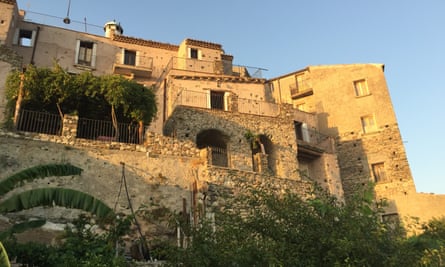
The next day we continued exploring the village, walking up past crumbling Palazzo del Giudice, where plants had overtaken the wrought-iron balconies, past the Madre Maria Assunta church to the upper part of the village, where there were a few signs of modern life: a cafe, cars, a supermarket.
At 9am it was already hot and, in what became a daily ritual, we headed for the relative cool of the cafe for an icy granita. Afterwards, an old lady tried to engage us in conversation, before realising our grasp of Italian barely extended beyond granita and cappuccino. She spotted the local doctor across the road and before we knew it he was giving me, my partner and our seven-year-old son a lift to the supermarket and insisting we meet him later for a tour.

From the village, the sea, just over a mile away down a hairpin road, looked dazzling and inviting. We joined the Italians on the beach but with no umbrella or chairs were woefully ill-prepared for the heat. The only option was to wallow in the famously clear water.
On the coast south of Belmonte, the resorts of Pizzo, Tropea and Scilla tick all the tourist boxes: ludicrously picturesque buildings above coves of turquoise water. By contrast, the long, straight pebbly beaches to the north are separated from modern seaside towns by the railway that runs the length of Italy’s west coast, and the SS18 main road. Here there are no big hotels, no serried rows of sun loungers, no preening or posing – just multi-generational Italian families who made playing and picnicking in 40C heat look effortless.
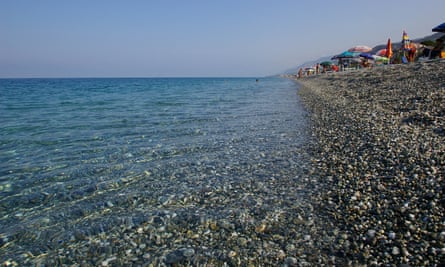
On an outing to Pizzo we were amazed to find ourselves in the midst of a tourist throng, dodging slow-moving souvenir shoppers, and relieved to return to the tranquillity of EcoBelmonte. That night we discovered another restaurant, down an alley where tables overlooked the hillside and ordered penne with ’nduja, the spicy Calabrian sausage, and wine from Cantine Benvenuto, a vineyard further south. Called Taverna Intru U Vica, it is also a B&B, independent of EcoBelmonte.
Belmonte Calabro is one of six historic hilltop villages a mile or so inland and barely visible from the coast. Another, Fiumefreddo Bruzio, was named one of the 20 most beautiful villages in Italy last year. In most countries such an accolade would bring a steady stream of visitors to eat gelato while looking out to sea, and posing by artist Salvatore Fiume’s bronze Surf Girl sculpture.
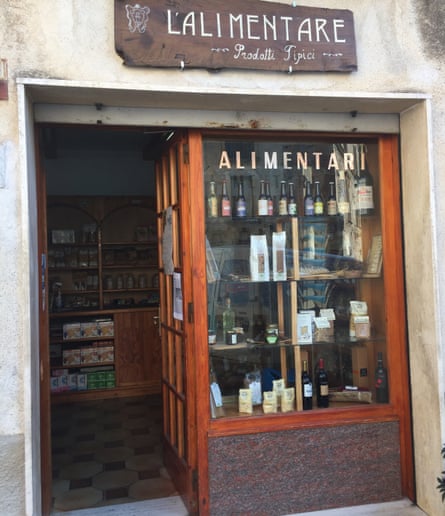
We arrived at siesta time, when the streets were deserted except for a group of men locked in heated debate. They shouted, gesticulated and stormed off … only to reappear moments later with a comeback more passionate than the last. Ten minutes passed, 15, then 20, and still they raged. We watched from the cafe opposite, trying to guess the cause of their upset – politics, an affair? In the end, I asked the cafe owner. Road signs, he said.
We headed back to EcoBelmonte, or ‘our village’ as we’d started to call it in the absence of other tourists, where the peace was disturbed only by church bells and snatches of a TV soap opera. With no pool and no other families, I worried that our son would be bored but he loved running freely about the village, saying it felt like “being in a fairytale”.
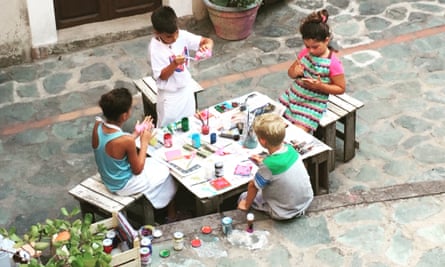
One afternoon Gabriella invited him to decorate some tiles with her daughter, nephew and niece, and while the children painted she told of plans to restore another 14 houses over the next two years. As we were talking, an elderly neighbour appeared for her afternoon constitutional. Elvira remembers when the village was home to hundreds of children, constantly running in and out of each other’s homes. Now, at 85 years old, she is happy to see doors open, flowers blooming, and children playing once again.
Where to stay
Accommodation was provided by EcoBelmonte. Houses from €30 a night per adult (€40 in July-August), plus €5 per child up to 12, under-fives free.
Car hire was provided by Sicily by Car. A week’s rental from Lamezia Terme airport costs from €120, including insurance.
Getting there
The nearest airport is Lamezia Terme (Ryanair flies from Stansted), a 45-minute drive away. Naples and Bari airports are about four hours away.
Best time to visit
Shoulder season (spring and autumn). July and August are sweltering and the houses often have no air conditioning.
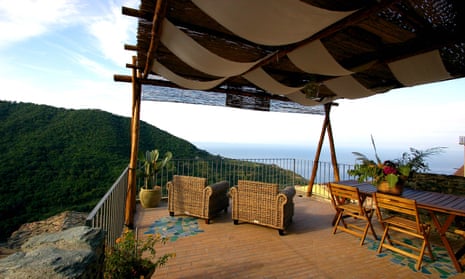
Comments (…)
Sign in or create your Guardian account to join the discussion